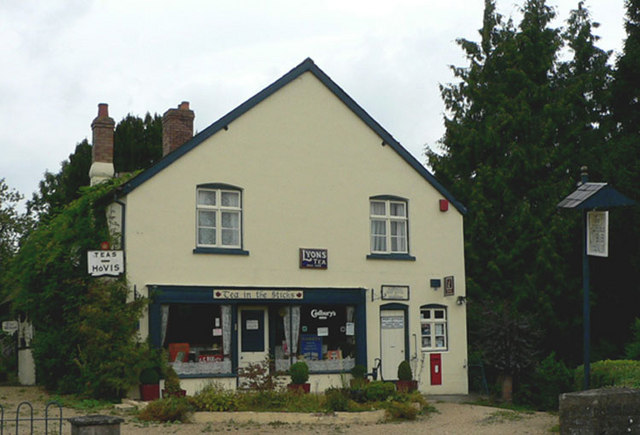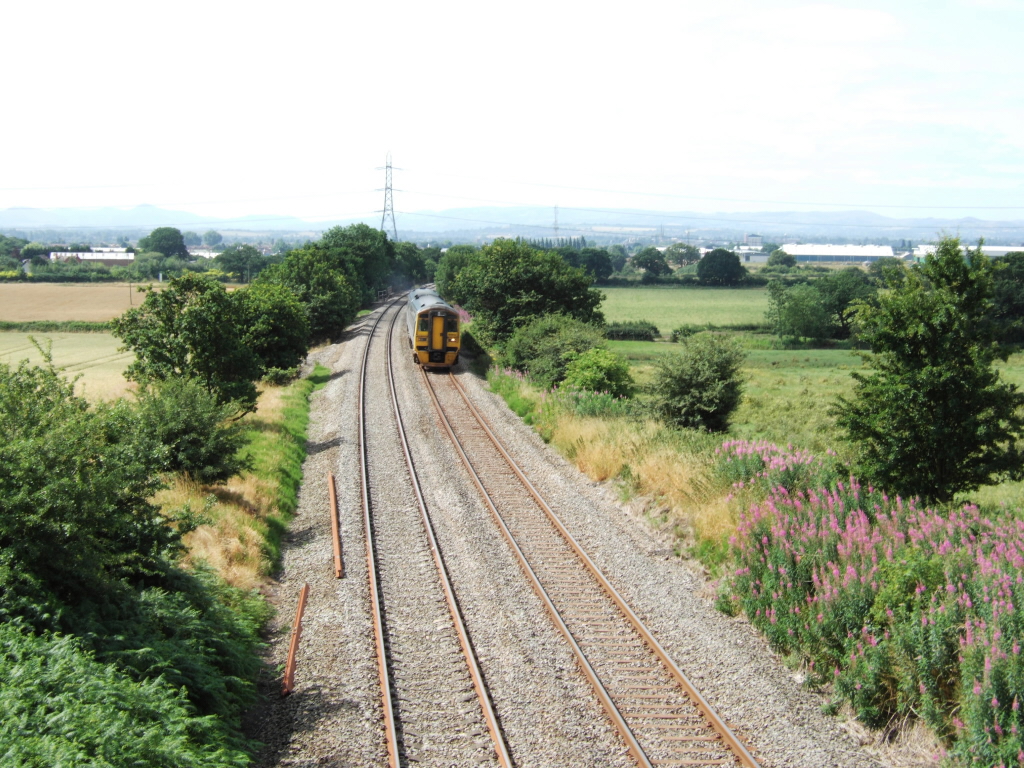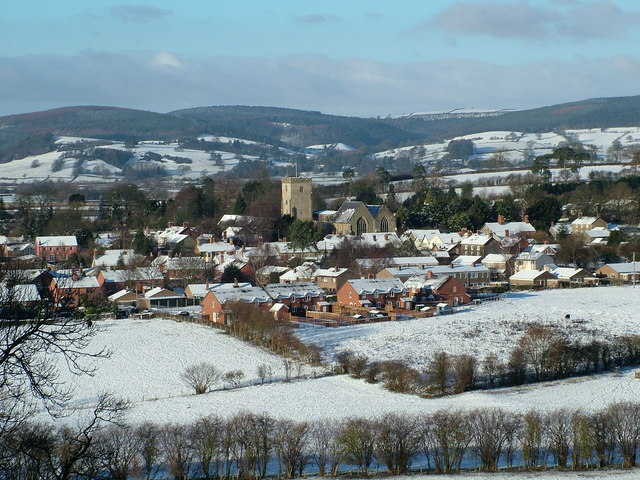|
Bucknell Railway Station
Bucknell railway station serves the village of Bucknell in Shropshire, England south west of Shrewsbury on the Heart of Wales Line. This railway station is located at street level, adjacent to the level crossing and parallel with Weston Road near the centre of the village. All trains serving the station are operated by Transport for Wales. The station has two platforms, although currently only the one adjacent to the original station building (now a private house and holiday cottage, which has been Grade-II listed since 1987) is operational, the other track having been lifted in the early 1960s. History The station and line was constructed by the ''Knighton Railway'' and opened in 1861. Further construction and route openings in 1865 and 1868 subsequently put the station on a through route between Shrewsbury and Swansea. Bucknell station quickly became the rail outlet for a wide area, stimulating a growth in the village itself. Facilities The station is unstaffed and has ... [...More Info...] [...Related Items...] OR: [Wikipedia] [Google] [Baidu] |
Bucknell, Shropshire
Bucknell is a village and civil parish in south Shropshire, England. The village lies on the River Redlake, within of the River Teme and close to the border of Wales and Herefordshire. It is about east of Knighton and is set within the Shropshire Hills Area of Outstanding Natural Beauty. The name is derived from Old English and means 'Bucca's hill' or 'he-goats' hill'. The village has the "P"s identified by ''Country Life'' as essential to a successful village: a pub, a post office, a place of worship, a primary school and public transport. History The settlement of Bucknell was first mentioned in the Domesday Book of 1086, as ''Buckehale'' or ''Buckenhill''. At the time of the Domesday survey, the Shropshire and Herefordshire boundary divided the village. The Norman magnate Roger de Montgomery held the village from the King. He built many castles including Montgomery, Shrewsbury, Ludlow, Clun, Hopton and Oswestry; at the time over 90 per cent of the lordships and man ... [...More Info...] [...Related Items...] OR: [Wikipedia] [Google] [Baidu] |
Hopton Heath Railway Station
Hopton Heath railway station in Hopton Heath, Shropshire, England, lies on the Heart of Wales Line, south west of Shrewsbury. The station is in a very rural area: the nearest sizeable settlement is Hopton Castle, and further afield the larger villages of Clungunford and Leintwardine, Herefordshire. The station was for a number of years the least used National Rail station in Shropshire, but passenger numbers have increased and Broome is now the county's least used station. The station and line were constructed by the Knighton Railway and opened in 1861. Further construction and route openings in 1865 and 1868 subsequently put the station on a through route between Shrewsbury and Swansea. The railway station is located below street level, to the south of the B4385 road bridge. The original station building is now private housing. Originally there were two tracks running through, but one has been lifted with the "singling" of the line in general back in the early 1960s. In a ... [...More Info...] [...Related Items...] OR: [Wikipedia] [Google] [Baidu] |
Railway Stations Served By Transport For Wales Rail
Rail transport (also known as train transport) is a means of transport that transfers passengers and goods on wheeled vehicles running on rails, which are incorporated in tracks. In contrast to road transport, where the vehicles run on a prepared flat surface, rail vehicles (rolling stock) are directionally guided by the tracks on which they run. Tracks usually consist of steel rails, installed on sleepers (ties) set in ballast, on which the rolling stock, usually fitted with metal wheels, moves. Other variations are also possible, such as "slab track", in which the rails are fastened to a concrete foundation resting on a prepared subsurface. Rolling stock in a rail transport system generally encounters lower frictional resistance than rubber-tyred road vehicles, so passenger and freight cars (carriages and wagons) can be coupled into longer trains. The operation is carried out by a railway company, providing transport between train stations or freight customer faciliti ... [...More Info...] [...Related Items...] OR: [Wikipedia] [Google] [Baidu] |
Railway Stations In Great Britain Opened In 1861
Rail transport (also known as train transport) is a means of transport that transfers passengers and goods on wheeled vehicles running on rails, which are incorporated in tracks. In contrast to road transport, where the vehicles run on a prepared flat surface, rail vehicles (rolling stock) are directionally guided by the tracks on which they run. Tracks usually consist of steel rails, installed on sleepers (ties) set in ballast, on which the rolling stock, usually fitted with metal wheels, moves. Other variations are also possible, such as "slab track", in which the rails are fastened to a concrete foundation resting on a prepared subsurface. Rolling stock in a rail transport system generally encounters lower frictional resistance than rubber-tyred road vehicles, so passenger and freight cars (carriages and wagons) can be coupled into longer trains. The operation is carried out by a railway company, providing transport between train stations or freight customer facil ... [...More Info...] [...Related Items...] OR: [Wikipedia] [Google] [Baidu] |
Former London And North Western Railway Stations
A former is an object, such as a template, gauge or cutting die, which is used to form something such as a boat's hull. Typically, a former gives shape to a structure that may have complex curvature. A former may become an integral part of the finished structure, as in an aircraft fuselage, or it may be removable, being using in the construction process and then discarded or re-used. Aircraft formers Formers are used in the construction of aircraft fuselage, of which a typical fuselage has a series from the nose to the empennage, typically perpendicular to the longitudinal axis of the aircraft. The primary purpose of formers is to establish the shape of the fuselage and reduce the column length of stringers to prevent instability. Formers are typically attached to longerons, which support the skin of the aircraft. The "former-and-longeron" technique (also called stations and stringers) was adopted from boat construction, and was typical of light aircraft built until the ad ... [...More Info...] [...Related Items...] OR: [Wikipedia] [Google] [Baidu] |
DfT Category F2 Stations
The Department for Transport (DfT) is a department of His Majesty's Government responsible for the English transport network and a limited number of transport matters in Scotland, Wales and Northern Ireland that have not been devolved. The department is run by the Secretary of State for Transport, currently (since 25 October 2022) Mark Harper. The expenditure, administration and policy of the Department for Transport are scrutinised by the Transport Committee. History The Ministry of Transport was established by the Ministry of Transport Act 1919 which provided for the transfer to the new ministry of powers and duties of any government department in respect of railways, light railways, tramways, canals and inland waterways, roads, bridges and ferries, and vehicles and traffic thereon, harbours, docks and piers. In September 1919, all the powers of the Road Board, the Ministry of Health, and the Board of Trade in respect of transport, were transferred to the new ministry. ... [...More Info...] [...Related Items...] OR: [Wikipedia] [Google] [Baidu] |
Railway Stations In Shropshire
Rail transport (also known as train transport) is a means of transport that transfers passengers and goods on wheeled vehicles running on rails, which are incorporated in tracks. In contrast to road transport, where the vehicles run on a prepared flat surface, rail vehicles (rolling stock) are directionally guided by the tracks on which they run. Tracks usually consist of steel rails, installed on sleepers (ties) set in ballast, on which the rolling stock, usually fitted with metal wheels, moves. Other variations are also possible, such as "slab track", in which the rails are fastened to a concrete foundation resting on a prepared subsurface. Rolling stock in a rail transport system generally encounters lower frictional resistance than rubber-tyred road vehicles, so passenger and freight cars (carriages and wagons) can be coupled into longer trains. The operation is carried out by a railway company, providing transport between train stations or freight customer facil ... [...More Info...] [...Related Items...] OR: [Wikipedia] [Google] [Baidu] |
Listed Buildings In Bucknell, Shropshire
Bucknell is a civil parish in Shropshire, England. The parish contains 30 listed buildings that are recorded in the National Heritage List for England. All the listed buildings are designated at Grade II, the lowest of the three grades, which is applied to "buildings of national importance and special interest". The parish contains the village of Bucknell and the surrounding countryside. Most of the listed buildings are in the village, and a high number of them are basically timber framed Timber framing (german: Holzfachwerk) and "post-and-beam" construction are traditional methods of building with heavy timbers, creating structures using squared-off and carefully fitted and joined timbers with joints secured by large wooden ... and date from the 14th to 17th centuries; these include houses, cottages, farmhouses and farm buildings. The other listed buildings are a church, an ice house, a railway station and a telephone kiosk. __NOTOC__ Buildings Refer ... [...More Info...] [...Related Items...] OR: [Wikipedia] [Google] [Baidu] |
Railways Of Shropshire
The English county of Shropshire has a fairly large railway network, with 19 National Rail stations on various national lines; there are also a small number of heritage and freight lines, including the famous heritage Severn Valley Railway running along its eastern border with Worcestershire. The majority of the county's public rail services are run by Transport for Wales Rail; the remainder are run by West Midlands Trains (under their ''West Midlands Railway'' brand) and Avanti West Coast. National Rail services National Rail services in Shropshire are centred about Shrewsbury station (all other 'national rail' stations in Shropshire have a direct train service to Shrewsbury, which is the county town), which is managed by Transport for Wales. The station is at the junction of the Wolverhampton to Shrewsbury Line, Shrewsbury to Chester Line, the Welsh Marches Line (between Cardiff and Manchester) and the Cambrian Line (towards Welshpool). Craven Arms station is at the junct ... [...More Info...] [...Related Items...] OR: [Wikipedia] [Google] [Baidu] |
Leintwardine
Leintwardine ( ) is a small to mid-size village and civil parish in north Herefordshire, England, close to the border with Shropshire. History Roman A popular misconception is that the Romans called the village ''Branogenium''. Branogenium in fact refers to a Roman fort roughly south of the village. The Roman name for Leintwardine was actually ''Bravonium''. The High Street in Leintwardine is on the same line as the Roman road known (to the English) as Watling Street. (The modern-day street in the village named Watling Street runs to the east of the original Watling Street, roughly on the alignment of the eastern edge of the Roman settlement.) The name Bravonium, as it appears in the Antonine Itinerary (Iter XII), is derived from the Romano-British word for quern. This suggests that there was either a hill or rock formation here that looked like a quern, or that there were quern quarries nearby. In the Upper Silurian series, the Leintwardine beds outcrop in the area and these c ... [...More Info...] [...Related Items...] OR: [Wikipedia] [Google] [Baidu] |
Brampton Bryan
Brampton Bryan is a small village and civil parish situated in north Herefordshire, England close to the Shropshire and Welsh borders. Brampton Bryan lies midway between Leintwardine and Knighton on the A4113 road. The nearest station is Bucknell railway station on the Heart of Wales Line. The village has had a complex history and its buildings reflect this. Much of Brampton Bryan is owned by the estate of the Harley family who have controlled the area since the early fourteenth century. They succeeded the powerful Mortimer family. As well as the main village, the parish contains the hamlets of Boresford and Pedwardine. Buildings The ruins of Brampton Bryan Castle are on a floodplain south of the River Teme, north of the church. From this site the castle guarded an important route from Ludlow along the Teme Valley to Knighton and on into Central Wales. The area has been important since Roman times and the village is a few miles west of Leintwardine - an important Roman sit ... [...More Info...] [...Related Items...] OR: [Wikipedia] [Google] [Baidu] |
Bedstone
Bedstone is a small village and civil parish in south Shropshire, England, close to the border with Herefordshire. The village is approximately from the railway stations at Hopton Heath and Bucknell and is situated just off the B4367 road. Bedstone College Bedstone College, an independent boarding and day school founded in 1948, was purchased in 2017 by London & Oxford Group, an asset management and investment banking firm specialising in introduction of Chinese investment to the UK Education sector. LOG has reportedly made little or no governance changes to the school and "giving its full support to the current management team at Bedstone." Famous former pupils include the present Astronomer Royal, Sir Martin Rees (whose parents founded the school), now Baron Rees of Ludlow, and explorer and TV presenter Monty Halls. The current head is Toby Mullins. Educating around 220 day and boarding students, the College is not selective and does not require pupils to sit an entrance ex ... [...More Info...] [...Related Items...] OR: [Wikipedia] [Google] [Baidu] |
.jpg)






.jpg)
